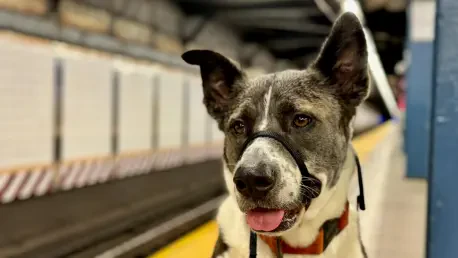Simon Glairy, a highly respected figure in the insurance and Insurtech space, is renowned for his work in risk management and AI-driven risk assessment. In today’s discussion, we tackle the pressing challenges faced by the pet insurance industry in both the U.S. and U.K., exploring solutions that go beyond the traditional model. The focus centers around innovative approaches, including leveraging technology, creating value-added services, and embedding insurers more deeply into pet owners’ lives to ensure mutual success.
Can you explain the current state of the pet insurance industry in the U.S. and U.K.?
The pet insurance industry in both the U.S. and U.K. is grappling with high claims ratios. For instance, in the U.S., insurers paid out nearly $2.5 billion in claims against $4 billion in premiums, indicating a 63% claims ratio. It’s similar in the U.K., with annual claims surpassing £1 billion for several years. This unsustainable model is squeezing profitability, pressing the industry to innovate or risk stagnation.
What are the major challenges facing pet insurance providers today?
Pet insurance providers face a significant challenge in balancing cost-efficiency while maintaining competitiveness. The industry is highly commoditized, resulting in a race to the bottom in terms of pricing. Providers must navigate high claims ratios and intense competition while exploring ways to deliver differentiated and value-added services to remain viable in a crowded market.
Why is there a high claims ratio in the pet insurance industry?
The high claims ratio primarily stems from costly and frequent veterinary treatments coupled with a rigid pricing model. Insurance providers struggle to align premiums with the rising costs of claims, creating a gap that impacts profitability. The inability to predict or prevent these claims exacerbates the problem, urging the industry to seek innovative solutions that offer better risk management capabilities.
How can differentiation through value-added services provide a sustainable path for pet insurers?
Differentiation through value-added services offers pet insurers a path to sustainability by moving beyond the price-driven model. This involves creating products and experiences that integrate wellness, diagnostics, and real-time monitoring, offering proactive support to pet owners. Such services enhance pet health outcomes, increase customer satisfaction, and contribute to long-term insurer retention and profitability.
What does “reimagining the model entirely around pet owners’ success” mean?
Reimagining the model around pet owners’ success means shifting focus from mere insurance coverage to comprehensive pet care solutions. Insurers would create a more holistic approach, encompassing everything from preventive health measures to supportive networks that actively engage pet owners in maintaining their pets’ well-being. This transition emphasizes collaboration and integration, ultimately enhancing the value and experience for the customer.
How important are pets to their owners, according to recent surveys?
Pets hold substantial emotional importance for their owners, as illustrated by surveys indicating that 97% of U.S. pet owners view their pets as family. Similarly, in the U.K., 59% care more about their pet’s well-being than their own. This deep connection underscores the potential for insurers to offer services that resonate with consumer priorities, enriching their bond with pets beyond financial transactions.
What potential do insurers have in leveraging the pet wellness ecosystem?
Insurers stand to gain immensely by harnessing the pet wellness ecosystem. By embedding themselves in the pet supply chain—from nutrition and diagnostics to behavior and health monitoring—they can transform the economics of pet care, reduce costs, and increase service value. This integration allows insurers to play a more pivotal role in preventive care, optimizing outcomes for pets and owners alike.
What are some ways pet insurance can support pet owners beyond reimbursing claims?
Pet insurance can extend support to owners by offering services like preventive care advice, interactive health monitoring tools, and establishing partnerships with vet networks. These services not only enhance the pet’s quality of life but also reduce long-term health costs. Such proactive measures offer real-time solutions that mitigate risks, fostering a deeper relationship between insurers and pet owners.
How can service-led experiences strengthen customer relationships and drive higher lifetime value?
Service-led experiences foster stronger ties with customers by delivering continuous value beyond the basic insurance offerings. Tools like health assessments, smart technology integration, and personalized wellness plans cultivate trust and loyalty, increasing lifetime value. By meeting the evolving needs of pet owners, insurers can enhance engagement and create enduring partnerships.
What does reframing pet insurance as a subscription to proactive pet care involve?
Reframing pet insurance as a subscription to proactive pet care involves shifting the focus from reactionary coverage to holistic, preventative wellness services. It means offering ongoing support tailored to individual pet needs, integrating care across various aspects—from nutrition to exercise and diagnostics. This approach aims to enhance the value proposition of pet insurance, making it indispensable in the owner’s life.
In what ways can integrating across the pet care supply chain reduce expense ratios for insurers?
Integration across the pet care supply chain can streamline operations, cut costs, and improve efficiency for insurers. By consolidating services like vet care, nutrition, and diagnostics into one cohesive offering, insurers can leverage economies of scale, reduce redundancies, and enhance bargaining power. This consolidated approach fosters better risk management, lowers expenses, and boosts profitability.
How can technology like smart collars contribute to pet health and behavior monitoring?
Smart collars offer a technological leap in monitoring pet health and behavior. They provide critical data on location, activity levels, and overall health metrics, enabling proactive management of a pet’s needs. Such technology can alert owners to potential health issues before they escalate, support personalized exercise routines, and create safer environments, thereby integrating seamlessly into the wellness ecosystem.
What does an ecosystem approach to pet insurance entail?
An ecosystem approach to pet insurance involves unifying various services under one umbrella to create a comprehensive pet care solution. This approach integrates vet care, diagnostics, nutrition, and behavior support, forming a network that offers continuous value. It shifts the relationship from transactional to relational, turning insurers into key partners in pet well-being and enhancing customer engagement.
How can vet networks play a role in optimizing pet wellness?
Vet networks are crucial in this ecosystem, providing preventative care and treatment. By establishing partnerships, insurers can facilitate better health outcomes, offer discounts, and enhance service accessibility for pet owners. Leveraging vet expertise ensures that pet wellness remains optimal, reducing costly treatments and fortifying the insurer-owner relationship through shared wellness goals.
What challenges have previous models faced in executing such strategies effectively?
Previous models have struggled with integrating various service elements cohesively and addressing execution inefficiencies. The transition from isolated pet policies to dynamic, customer-centered platforms often falls short due to outdated technological infrastructures and lack of strategic alignment. Enhancing data orchestration and digital experiences is essential for overcoming these hurdles.
How should pet insurers build technology foundations differently?
Pet insurers should reimagine their technology foundations around customer and pet needs, rather than just policy management. This shift involves creating platforms akin to eCommerce systems, facilitating seamless interaction and service delivery. Emphasizing APIs, data fluidity, and event streaming enables more personalized and adaptable services, transforming touchpoints into comprehensive wellness experiences.
What are the key elements of creating cohesive digital experiences through integrated ecosystems?
Creating cohesive digital experiences requires seamless integration of services through APIs and event-streamed data handling. Insurers need platforms that can manage multiple products, offering personalized advice and risk mitigation. Presenting a unified, user-friendly interface that provides consistent services across devices enhances customer engagement, satisfaction, and retention.
How can data fluidity and event streaming enhance customer experiences?
Data fluidity and event streaming bring adaptability and personalization to customer interactions. They allow real-time adjustments to services, providing tailored experiences that meet individual pet needs. By enabling dynamic data exchanges, insurers can offer highly responsive and effective solutions, fortifying the relationship with pet owners and driving competitive advantage.
How can insurers offer more dynamic experiences within the traditional pet insurance lifecycle?
Insurers can enhance traditional lifecycle experiences by integrating guided, data-driven services at key stages like policy selection and renewal. Personalized insights and recommendations empower owners to make informed decisions, while responsive feedback mechanisms improve service quality, creating a richer, more engaging insurance experience throughout the pet’s life cycle.
What are some benefits of an integrated approach to technology in the pet insurance industry?
An integrated technology approach streamlines the delivery of services, improving efficiency and customer satisfaction. It offers a consistent experience across channels, reduces operational costs, and facilitates innovative service offerings. By enabling insurers to adapt swiftly to market demands and consumer behaviors, this approach strengthens competitive positioning and enhances growth prospects.
How does building an integrated customer success platform create a competitive advantage?
An integrated customer success platform centralizes interactions and analytics, offering insurers holistic management capabilities. It provides complete visibility into customer needs, preferences, and risk profiles, fostering personalized service delivery. This comprehensive insight enhances decision-making, aligns offerings with customer expectations, and supports long-term retention and industry differentiation.
What role does real-time data play in mitigating risks and supporting pet wellbeing?
Real-time data empowers insurers by providing immediate insights into pet health and behavior. It enables prompt intervention, optimizing treatment and preventive measures, thus mitigating risks. This data-driven approach enhances pet wellbeing management, solidifying an insurer’s role as a trusted partner in health, safety, and happiness for both pets and owners.
How does establishing a comprehensive ecosystem embed insurers into pet owners’ lives?
Establishing a comprehensive ecosystem integrates insurers deeply into the everyday experiences of pet owners. By supporting diverse needs and delivering consistent value, it transforms the insurance model into a relationship-driven service. Providers become indispensable partners that enhance pet care quality, cementing their relevance and strengthening emotional and financial ties with owners.
In what ways can insurers become true partners in pet wellbeing?
Insurers become true partners by actively engaging in holistic care strategies, extending beyond mere financial coverage. They offer preventative health tools, data-driven insights, and collaborative networks that support overall pet wellness. Such initiatives elevate the insurer’s role, building trust and affinity with pet owners, and creating a shared commitment to healthier, happier pets.









